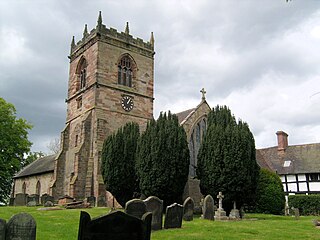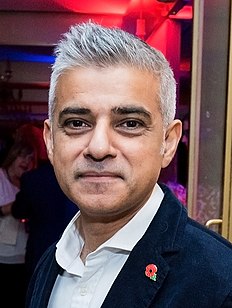
Bartholomew de Badlesmere, 1st Baron Badlesmere was an English soldier, diplomat, Member of Parliament, landowner and nobleman. He was the son and heir of Sir Gunselin de Badlesmere and Joan FitzBernard. He fought in the English army both in France and Scotland during the later years of the reign of Edward I of England and the earlier part of the reign of Edward II of England. He was executed after participating in an unsuccessful rebellion led by the Earl of Lancaster.

Penshurst Place is a historic building near Tonbridge, Kent, 32 miles (51 km) south east of London, England. It is the ancestral home of the Sidney family, and was the birthplace of the great Elizabethan poet, courtier and soldier, Sir Philip Sidney. The original medieval house is one of the most complete surviving examples of 14th-century domestic architecture in England. Part of the house and its gardens are open for public viewing. Many TV shows and movies have been filmed at Penshurst.

Nicholas de Crioll, of a family seated in Kent, was Constable of Dover Castle and Keeper of the Coast during the early 1260s. His kinsman Bertram de Criol had distinguished himself in these offices during the preceding 20 years and both were near predecessors of the eminent Warden of the Cinque Ports, Stephen de Pencester.

Ashley is a village and civil parish in the East Cambridgeshire district of Cambridgeshire, England, about 4 miles (6.4 km) east of Newmarket. The modern village consists of the two ancient parishes of Ashley and Silverley. Ashley covers 2,250 acres (910 ha) and in the 2011 census had a population of 749. Ashley is in the electoral area of Cheveley ward.

Giles de Badlesmere, 2nd Baron Badlesmere was an English nobleman.

Eastminster was a Cistercian abbey on Tower Hill in London, founded by Edward III in 1350 immediately outside the Roman London Wall and thus today in the E1 postcode district. Among its endowments was the reversion in 1350 given by King Edward which he owned of one of the four manors of Shere in the hamlet of Gomshall, Surrey which acquired the name Towerhill, due to its patronage of the abbey.

Lapley Priory was a priory in Staffordshire, England. Founded at the very end of the Anglo-Saxon period, it was an alien priory, a satellite house of the Benedictine Abbey of Saint-Remi or Saint-Rémy at Reims in Northern France. After great fluctuations in fortune, resulting from changing relations between the rulers of England and France, it was finally dissolved in 1415 and its assets transferred to the collegiate church at Tong, Shropshire.
Sir Nicholas Haute, of Wadden Hall (Wadenhall) in Petham and Waltham, with manors extending into Lower Hardres, Elmsted and Bishopsbourne, in the county of Kent, was an English knight, landowner and politician.
William Gage was a major landowner and the father of the Tudor courtier Sir John Gage KG.
Sir John Gage was a major landowner and grandfather of the Tudor courtier Sir John Gage KG.
Eleanor St Clere was the heiress of a substantial number of manors and grandmother of the Tudor courtier Sir John Gage KG.
Thomas St Clere was a son of Sir Philip St Clere of Penshurst Place. He was a major landowner whose estates included property in eight English counties.
Sir Philip St Clere was a son of Sir Philip St Clere and Joan de Audley. He served as High Sheriff of Surrey and Sussex and was a major landowner whose estates included land in eight English counties.
Margaret de Loveyne was a daughter of Sir Nicholas Loveyne and his second wife Margaret de Vere. She inherited extensive property and her second husband was High Sheriff of Surrey and Sussex.
Margaret de Vere was an English noblewoman, a daughter of John de Vere, 7th Earl of Oxford and his wife Maud de Badlesmere.
William Devereux of Frome was a member of a prominent Herefordshire family during the reign of Edward II and Edward III. He was an important retainer of Roger Mortimer, 1st Earl of March and Queen Isabella, and a knight of the Bath.
A proof of age inquisition was required during the feudal era in England to enable a minor to exit wardship. For a male the age to be proved was 21, for a female 16. Witnesses were required to give evidence of the subject's date of birth, or christening. The findings of the inquisition were returned to the appropriate court, which then ordered the guardian to release the property to the ward, who obtained seizin. If the minor was a tenant-in-chief the inquisition reported to the appropriate Royal Court. The first stage of the process was the application by the ward for a writ for the inquisition to commence. This was effectively a written order by the king to the escheator in the county in which the ward's lands were situated, to empanel witnesses and begin the inquisition.

William la Zouche, 1st Baron Zouche (1276/86–1352) lord of the manor of Harringworth in Northamptonshire, was an English baron and soldier who fought in the Wars of Scottish Independence. He is referred to in history as "of Harringworth" to distinguish him from his first cousin Alan la Zouche, 1st Baron la Zouche (1267–1314) of Ashby de la Zouche in Leicestershire.
Margaret de Bereford was a substantial English property owner whose husbands were notable as merchants, soldiers or courtiers in the service of King Edward III.













